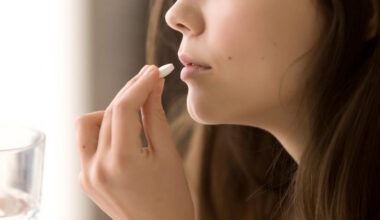Acne is a common skin condition that affects millions of people worldwide. Learn how to treat Acne with Benzoyl Peroxide.
While there are various treatments available, one of the most effective and widely used solutions is benzoyl peroxide.
This potent topical medication has been proven to combat acne-causing bacteria, reduce inflammation, and unclog pores.
In this comprehensive guide, we will delve into the science behind benzoyl peroxide, its benefits, potential side effects, and provide step-by-step instructions on how to incorporate it into your skincare routine for clearer and healthier skin.
Understanding Acne and How Benzoyl Peroxide Works
What is Acne?
Acne occurs when hair follicles become clogged with oil and dead skin cells. This environment provides an ideal breeding ground for Propionibacterium acnes (P. acnes), a bacterium that contributes to acne development.
The result is the formation of pimples, blackheads, whiteheads, and more severe lesions like nodules and cysts. How to Treat Acne with Benzoyl Peroxide.
How Does Benzoyl Peroxide Work?
Benzoyl peroxide is an organic compound that exerts its acne-fighting properties in several ways:
Killing Bacteria:
Benzoyl peroxide is a potent bactericidal agent, effectively eliminating P. acnes on the skin’s surface and within the pores.
Exfoliation:
The compound has mild exfoliating properties, helping to remove dead skin cells and prevent pore blockages.
Reducing Inflammation:
Benzoyl peroxide has anti-inflammatory effects that can help soothe red, swollen acne lesions.
The Benefits of Using Benzoyl Peroxide for Acne Treatment
Effective Against Mild to Moderate Acne
Benzoyl peroxide is particularly beneficial for individuals with mild to moderate acne. It is often recommended as a first-line treatment by dermatologists due to its efficacy in managing these types of acne lesions.

Over-the-Counter (OTC) Availability
One significant advantage of benzoyl peroxide is its widespread availability in various formulations, such as creams, gels, lotions, and cleansers. Many of these are available over-the-counter without a prescription.
Reduces the Risk of Antibiotic Resistance
Over-reliance on antibiotics for acne treatment can lead to antibiotic resistance, rendering them ineffective against infections. Benzoyl peroxide can be a valuable alternative or adjunct to antibiotic treatments, reducing the risk of antibiotic resistance.
Minimizes Acne Scarring
By reducing inflammation and preventing new breakouts, benzoyl peroxide can contribute to minimizing the formation of acne scars over time.
Proper Usage and Application
Patch Test
Before incorporating benzoyl peroxide into your skincare routine, it is essential to conduct a patch test. Apply a small amount of the product on a small area of skin (like the forearm) and monitor for any adverse reactions such as redness, itching, or irritation.
Start with a Lower Concentration
Benzoyl peroxide comes in various concentrations, ranging from 2.5% to 10%. For beginners, it is advisable to start with a lower concentration to minimize the risk of irritation.
As your skin becomes accustomed to the treatment, you can gradually increase the concentration if needed.
Cleanse and Pat Dry
Begin your benzoyl peroxide application by washing your face with a gentle cleanser, free of harsh chemicals. Pat your skin dry with a soft towel, avoiding excessive rubbing.
Apply a Thin Layer
Apply a thin layer of benzoyl peroxide to the affected areas, focusing on pimples, blackheads, and whiteheads. Avoid contact with the eyes, lips, and nostrils.
Frequency of Application
Initially, apply benzoyl peroxide once a day, preferably in the evening, to gauge your skin’s reaction. If your skin tolerates the treatment well, you can increase the frequency to twice daily, morning and evening.
Moisturize and Protect
Benzoyl peroxide can cause dryness and irritation, so it is crucial to follow up with a non-comedogenic moisturizer to keep the skin hydrated. Additionally, always wear sunscreen during the day to protect your skin from harmful UV rays.
Potential Side Effects and Precautions
Skin Dryness and Irritation
The most common side effects of benzoyl peroxide include dryness, redness, and peeling. To minimize these effects, use a lower concentration initially and apply a moisturizer regularly.
Bleaching of Fabrics
Benzoyl peroxide has the potential to bleach clothing, towels, and bed linens. Be cautious when using it, and allow enough time for the product to dry before coming into contact with fabrics.
Allergic Reactions
In rare cases, individuals may experience an allergic reaction to benzoyl peroxide. If you notice severe itching, swelling, or difficulty breathing, discontinue use and seek medical attention immediately.
Interaction with Other Acne Medications
Benzoyl peroxide may interact with other acne medications or skincare products, leading to increased irritation or decreased effectiveness. Consult with a dermatologist before combining different treatments.How to Treat Acne with Benzoyl Peroxide.
Conclusion
Benzoyl peroxide is a potent and effective acne treatment that has helped countless individuals achieve clearer skin. By understanding how this compound works, its benefits, and following proper usage guidelines, you can harness its potential to combat acne and regain your confidence.
As with any skincare product, consistency and patience are key, so stay committed to your routine, and the results will follow. However, if you experience persistent or severe side effects, consult a dermatologist for personalized guidance and support on your journey to healthy, acne-free skin.
Read Next Article:






